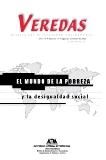Desarrollo regional, desigualdad y pobreza en México, 1990-2005
Abstract
Regional development, inequality and poverty in Mexico, 1990-2005. The supply of labor in Mexico has had high growth rates in recent decades, whereas the growth rate of total population had lower rates. In periods of economic crisis, which has been observed low growth rates of gross domestic product (GDP) (negative in some years), the prospects to provide employment to these growing volumes of labor have been significantly reduced. Moreover, regional economic imbalances that have characterized the country’s economic growth from 1980 until now, combined with a model of constant braking of increased real wages are the most important factors in economic inequality and poverty levels because the unfair income distribution. The real potential for a fairer distribution of income and a significant reduction of poverty aimed to a change in the model of capitalist accumulation in the short to medium term.





